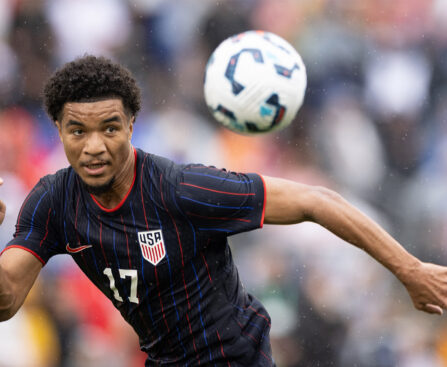The 2026 World Cup is less than 370 days away, and the clock is ticking for Team USA as they prepare under new head coach Mauricio Pochettino. He’s been on the job since August 2024 with mixed results thus far.
Why has Team USA struggled with a new head coach?
A learning curve is not surprising as players adjust to a new style and the staff tinkers with roster and lineup combinations. Right now, however, there isn’t much optimism from outside the locker room as to whether the U.S. can put together a good showing on the world’s biggest stage.
On Saturday, June 7, they lost 2-1 in a friendly (an exhibition match for the unfamiliar) against Türkiye, playing without many of their biggest stars. It was a tight match. The U.S. scored first on a fantastic goal from forward Jack McGlynn. From there, the 27th-ranked team in the world overpowered them, scoring twice in three minutes to take control. Pochettino was still pleased with what he saw.
“I think the team shows great energy, great mentality, great attitude,” Pochettino said. ”It is this type of game that maybe if you made a mistake, you can lose, but it’s soccer, it’s football.”
Pochettino was mostly happy with the way his team played, not merely the results.
Where are the team’s big guns?
Without stars like Christian Pulisic, Weston McKennie, Tim Weah, Gio Reyna and Antonee Robinson, all either recovering from their European seasons or playing in the Club World Cup next week, young up-and-comers saw some crucial minutes.
Malik Tillman and Chris Richards stood out for their performances. Defender Tyler Adams saw progress as well.
“Really exciting,” Adams said. “I think for the first time, probably in the past few camps, we’re going to take a lot more positives away than negatives, so a good building block for a lot of those guys. A lot of them, it’s their first opposition from outside of Concacaf, which is good experience for a lot of them. The game is just a little bit different, but they played excellent tonight.”
They’ll get another shot in a high-profile setting next week during the first stage matches of the Gold Cup tournament.
“I think we want to win and compete really well in the Gold Cup, and it’s going to be tough,” Pochettino said. “Of course, it’s going to be tough, but I think what we expect is what we saw, and then we need to have the capacity to continue giving tools to the players to be better and better and better.”
Is Team USA showing any improvement?
Despite their lack of confidence in the team, soccer pundits and online fans admit that Saturday’s loss was one of the best performances in the short Pochettino era. The U.S. side demonstrated a clear desire to execute his strategy. Pochettino took over after a first-round elimination at last year’s Copa América tournament, which led the U.S. Soccer Federation to fire coach Gregg Berhalter.
“I think what I cannot complain about is that every single player was very connected with the team,” Pochettino said. “Even the players that didn’t play, they were helping the team.”
It was still Team USA’s third straight loss, which hasn’t happened since 2015. Under Pochettino, they have a 5-4-0 record, and time is running out to get it right, with approximately 6 to 8 matches remaining before the World Cup.
One of those matches will take place Tuesday at 8 p.m. Eastern as they kick off a friendly against Switzerland in Nashville, Tennessee. Switzerland will pose another tough test. They are ranked 20th in the world and beat Mexico 4-2 on Saturday, June 7.
Joey Nunez (Video Editor)
contributed to this report.


